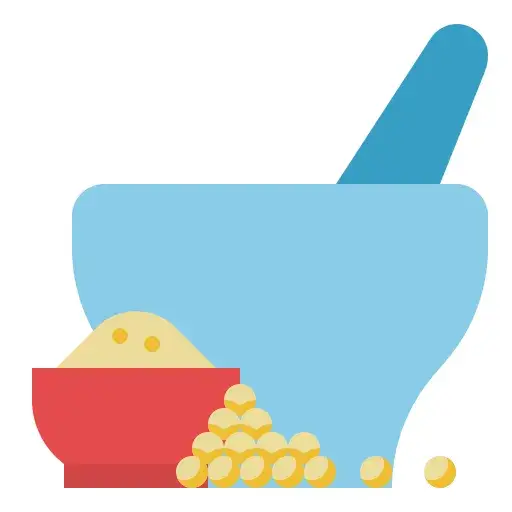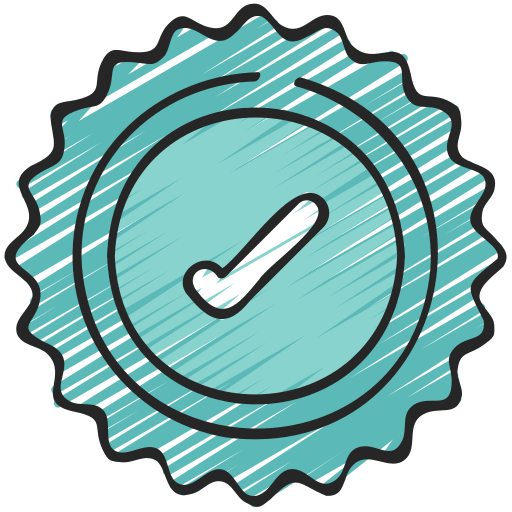5 Reasons for Low Milk Supply & Methods to How to Increase Breast Milk or Mothers Milk

You know what, the rate of growth of the infants in first 6 months of life is greater & faster than any other period of life and this is the reason why WHO & UNICEF recommend exclusive breastfeeding or giving mothers milk for 6 months.
Breastfeeding or giving mothers milk is an unequalled way to provide ideal food for the growth & development of the baby. But what if I have a low milk supply? Why this is happening? And how to increase breast milk or mothers milk?
Want to know the reasons for low milk supply & methods how to increase breast milk or mothers milk then read the below blog till the end.
The first & the very common reason for low milk supply is:
1. Delay in Breastfeeding
Problem: In the starting days the capacity of breast of mothers milk production is calibrated in response to the amount of mothers milk which is removed. This means if you feed less or late, less mother milk is removed and hence the breast assumes that this is the sufficient quantity & the capacity is set to a lower point. Mostly the reason for the delay is the separation of mother & child if the baby needs to be admitted to intensive care units for some or other reasons like prematurity or illness. Also, if the mother is not well after delivery.
The remedy Is to how to increase breast milk is, that if the mother is not with the child, then you have to express the mothers milk either manually or with the help of a breast pump at intervals of 3 to 4 hours regularly.
Problem: Nowadays for low milk supply doctors suggest formula feeding for the first 12-24 hours after C-Section as the mother is not in the condition to feed the baby exclusively. Here the formula feed is given just to ensure that the baby doesn’t remain hungry due to fewer feeding intervals. But many mothers continue the same & don’t work on the baby to suck in those initial days & hence again the calibration is set to a lower point results low milk supply due to the assumption of low demand.
So here the Remedy for how to increase breast milk supply is though the mother can’t sit and feed the baby due to pain, stitches or fatigue, family members or the healthcare staff should put the baby to the breast at regular intervals.
Problem: In today’s date many young mothers are reluctant to breast feeding. They hesitate or are not willing to breastfeed their babies due to many reasons. The major is cosmetic reasons. They feel that due to breastfeeding their breast will turn saggy or out of shape. Also, they feel that exclusive breastfeeding will interrupt their career & in their work-life balance.
Remedy: Intelligent Counselling: So, the remedy to enhance mothers milk here is intelligent counselling of such mothers. Give them the information about the benefits of mothers milk. Also, make them realize the impact of mothers milk on their child’s lifetime health & immune system.
The second major reason for the low milk supply is:
2. Incorrect Latching
This is nothing but the poor attachment of the baby to the breast. Poor attachment leads to shallow & quick sucks instead of slow & deep. This will again allow the baby to suck less mothers milk which will send the signal to set low calibration to the mother hence the milk production will be less again.
The Remedy for this is to Learn the Proper Technique: Taking care of the medical staff or a doctor to know the proper technique. Now let’s see the correct technique.
First, both the baby & mother should be in a comfortable position. Feeding should be done in a sitting position. Hold the baby in an inclined upright position on your lap or a nursing pillow. The baby’s head should be on your forearm and the neck slightly extended. Good attachment or correct latch means the child’s mouth should be wide open and the chin should touch the breast. Also, the portion of the nipple & areola should be in the baby’s mouth for effective mothers milk transfer. And this should be guided by the mother. Proper positioning for mothers milk transfer is chest-to-chest contact between the infant & the mother. The infant’s ear, shoulder & hip should be in one line.
Now let’s see what the need for a good latch is and how it works in physiology.
Whenever the baby sucks the mothers milk (breast) it stimulates the nerves at the portion of the areola & nipple. These nerve impulses are sent to the hypothalamus. Here the oxytocin hormone is synthesized. Then this oxytocin is transported to the posterior pituitary. Further, the oxytocin is released by the posterior pituitary & transported to mammary glands. Here the oxytocin contracts the cells of the ducts containing mothers milk & this is how the mothers milk is ejected. This is also known as “Milk let down reflex”. This complete reflex is set during suckling & hence good attachment is a very important factor in improving the milk supply.
The third major reason for the low milk supply is:
3. Postpartum Stress or Depression: The so-called “Baby Blues”
In today’s date 13-19% of women are affected by these unhealthy mental conditions post-delivery. Postpartum depression is a physical change which comes in every woman after childbirth. The hormones like progesterone & estrogen are at a very high level at the time of pregnancy & they suddenly drop dramatically after childbirth. Also, the other hormones secreted by the thyroid gland drop suddenly contributing to depression.
This is normal for 2-3 days after delivery but if it continues for weeks or months together then this issue should be considered & worked on it. Though we have found the connections between mothers milk supply & psychological condition of mother now Ayurveda has found it many years back & Aacharya Sushruta says the extreme level of emotions like krodh i.e., anger atishoka i.e., sadness at a deeper level, chinta that means worry like hopelessness, worthlessness which is very common post-delivery. Avaatsalya i.e. if the bond between child & mother is not developing as per expectation.
All these factors eventually affect mothers milk formulation. Also, if this state of imbalanced emotions is prolonged then we term it as “Depression”.
Now let’s see how it impacts mothers milk supply scientifically with the help of a flow chart.
Whenever the mother is stressed hormone cortisol is released in her system. This cortisol hormone enters the mothers milk which is called second-hand cortisol now. When the baby is fed with this mothers milk, it enters the baby’s intestinal tract. There it prompts neurotransmitter signals that go to the baby’s brain. These neurotransmitter signals will affect the areas of the baby’s brain which regulate emotions.
The result of this is the child gets cranky, fussy, irritated & refuses to drink mother’s milk which will inhibit the milk ejection reflex and finally result in a low milk supply again.
Remedy: Reassurance & Practical support especially through partners. Continuing positive counselling for such mothers will improve their conditions.
I AM WITH YOU are the magical words which on repetition will reduce her anxiety & worries & make her feel relaxed.
Another mother to be practised is “Rooming In (maternal-infant bonding)”: In this, the mother & baby are kept together for 24 hours & this is manifested by gazing at the baby, cuddling, fondling, kissing and for this, you have to keep the baby near the mother on her cot.
Nowadays doctors also advise practising “Kangaroo Care” This is nothing but skin-to-skin contact between the mother & baby just like the animal kangaroo holds its baby near to it in its pouch. Researchers found many psychological benefits linked to parental anxiety levels by promoting bonding & attachment. It also improves parental confidence & promotes increased milk production.
The fourth major reason is:
4. Hormonal Disorder
If the mother is suffering from endocrine problems like hypo or hyperthyroidism, PCOS, hypertension, or diabetes then this is going to affect the mother’s milk supply as the process of lactogenesis which is nothing but milk secretion involves hormones. The secretory activity of milk is enhanced directly or indirectly by growth hormones, glucocorticoids, thyroxine & insulin. Thyroid hormones regulate the level of prolactin & oxytocin which are the important hormones of mother’s milk ejection cycle and so the imbalance in these hormones will interrupt lactation.
The remedy for this is treating your disorders with proper medications and keeping your hormones in balance so that it allows the body to function properly. Also, pay regular visits to your physician and get your profile done at regular intervals to know your levels.
The fifth major reason is:
5. Inadequate Rest And Improper Diet
Sleep deprivation rises the level of stress hormones like cortisol which inhibits the mothers milk letdown reflex and again the low milk supply & demand mechanism is set by the body eventually resulting in low milk production.
The remedy for this is to get an ample amount of sleep & rest to keep your mental stability & hormones in balance. This will reduce your anxiety & also give you freshness. Try to sleep whenever your baby sleeps regardless of day or night. Listen to some soothing music to induce sleep. Also, you can have one cup of milk with a pinch of nutmeg powder & 1 tsp sugar with ghee.
Improper Diet
Ayurveda believes in “stanyadushti” due to improper diet intake. Stanyadushti is nothing but the mothers milk contaminated by the harmful qualities of vitiated Vaat, Pitta & kapha doshas. The spicier & junk food will create indigestion in the mother’s body & the milk of such mothers will create flatulence, constipation, and digestion issues in babies too. Mother milk composition consists of Protein 1.2%, Fat 3.2%, Carbohydrate 7.5% and water 87%.
Water plays a very vital role in mothers milk production. So, if the mother doesn’t hydrate herself well then it will affect the milk supply again. A healthy mother will produce 500-900ml mothers milk per day with 520 Kcal per day. Also, the baby needs 150-175 ml fluid per kg body weight per day which means if we consider a baby of average 3 kg weight then it needs 450-500ml of fluid per day. And the baby needs 100-110 Kcal food per kg body weight per day. It means a baby of an average 3 kg body weight requires 300 Kcal of food per day.
Considering this we have suggested some diet changes. So, let’s list down those.
It means that if the person intakes a high amount of rasa dhatu in his/her diet then eventually it will increase rasa dhatu in his/her body. In the same way, if the mother intakes more amount of milk in her diet it will eventually go and increase the amount of mothers milk production in her body too.
So, a glass full of milk with 2 tsp of Shatavari Kalp and ghee is advised to be taken twice or thrice daily as per hunger or need. Also, we have seen that mothers milk is composed of 87% water so the milk here will again increase the water content in the body. We have also listed some homemade recipes which will help to increase breast milk production.
Have Aliv Kheer (garden cress seeds porridge) twice a day made with Jaggery and add ghee to it. Also, you can have homemade butter with 1 tsp of sugar in that. You can include different types of porridge in your daily diet like rice porridge, semolina porridge, samo rice porridge, wheat porridge, etc. Prepare these porridges with saffron, jaggery, and ghee and also don’t forget poppy seeds.
Also, some specific spices & drugs are told by Ayurveda to be used in daily cooking methods to avoid stanyadushti.
Do include turmeric in some or other forms in your meals. Mostly in curries, dals, vegetables, breakfasts, etc. You can also include homemade pickles containing turmeric & saindhav salt.
Usage of asafoetida (hing) in daily diet also helps to avoid stanyadushti.
Add sprouted fenugreek seeds (methi) in curries & soups. It helps in milk production.
Cumin Seeds i.e., Jeera are again good for breast milk. You can use cumin seeds powder in buttermilk or sprinkle it on smoothies & soups.
Equisential provides the complete post-pregnancy dietary regimen as well which you can purchase online & to get cured of low breast milk supply & how to increase breast milk or mothers milk.
We have a variety of Laddu, Panjiri & Kadha’s to rejuvenate you post postpartum.
So, this is all regarding low milk production & how using some remedies you can enhance your breast milk production & its quality. We hope this information will help you out there.
Thank You For Reading Till The End.














 Healthy Laddu
Healthy Laddu To Be Mom’s Care
To Be Mom’s Care Postpartum Care
Postpartum Care Cookies
Cookies Baby Food
Baby Food Combo Packs – Postpartum Laddu’s
Combo Packs – Postpartum Laddu’s

